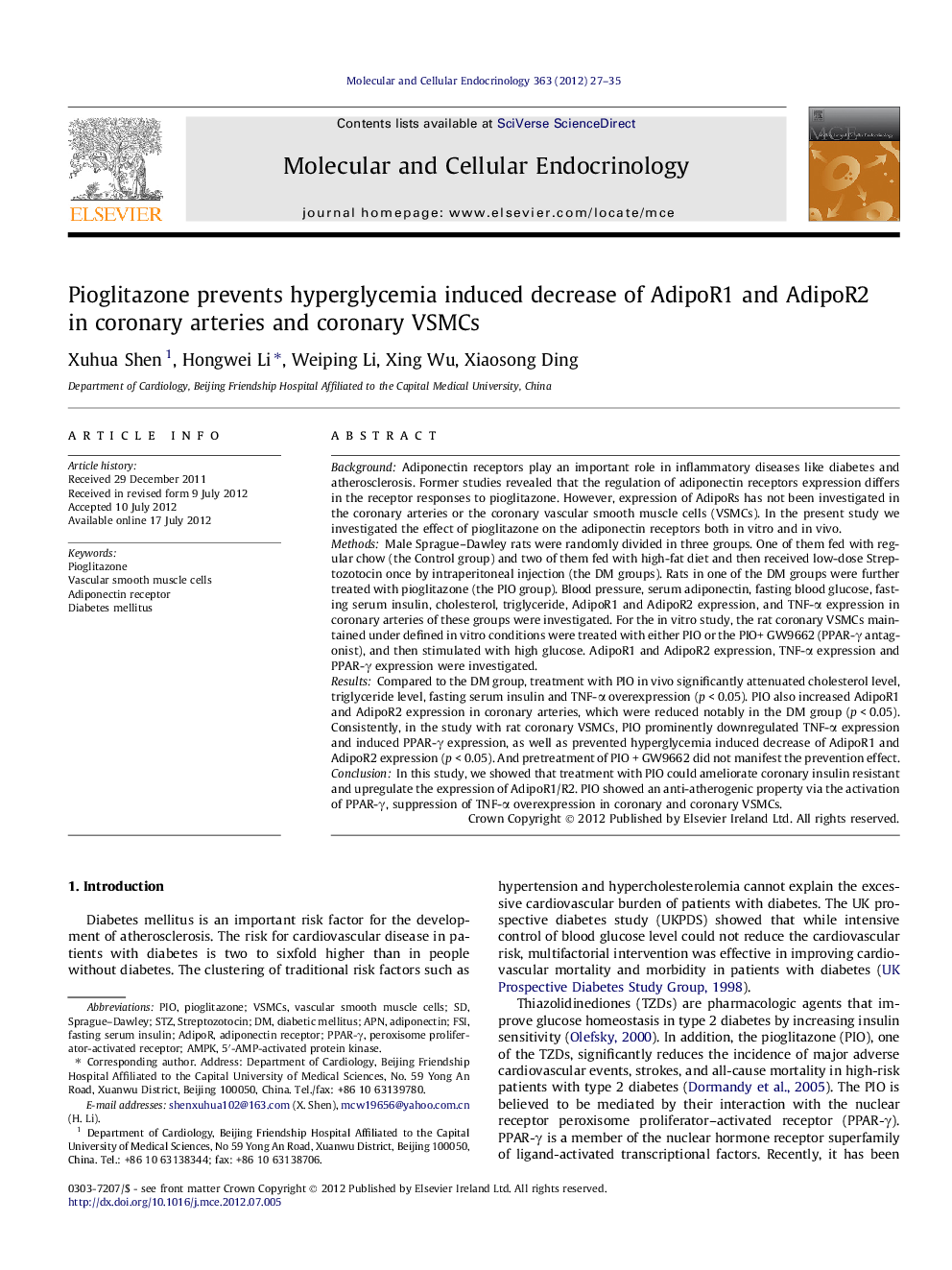| Article ID | Journal | Published Year | Pages | File Type |
|---|---|---|---|---|
| 2196253 | Molecular and Cellular Endocrinology | 2012 | 9 Pages |
BackgroundAdiponectin receptors play an important role in inflammatory diseases like diabetes and atherosclerosis. Former studies revealed that the regulation of adiponectin receptors expression differs in the receptor responses to pioglitazone. However, expression of AdipoRs has not been investigated in the coronary arteries or the coronary vascular smooth muscle cells (VSMCs). In the present study we investigated the effect of pioglitazone on the adiponectin receptors both in vitro and in vivo.MethodsMale Sprague–Dawley rats were randomly divided in three groups. One of them fed with regular chow (the Control group) and two of them fed with high-fat diet and then received low-dose Streptozotocin once by intraperitoneal injection (the DM groups). Rats in one of the DM groups were further treated with pioglitazone (the PIO group). Blood pressure, serum adiponectin, fasting blood glucose, fasting serum insulin, cholesterol, triglyceride, AdipoR1 and AdipoR2 expression, and TNF-α expression in coronary arteries of these groups were investigated. For the in vitro study, the rat coronary VSMCs maintained under defined in vitro conditions were treated with either PIO or the PIO+ GW9662 (PPAR-γ antagonist), and then stimulated with high glucose. AdipoR1 and AdipoR2 expression, TNF-α expression and PPAR-γ expression were investigated.ResultsCompared to the DM group, treatment with PIO in vivo significantly attenuated cholesterol level, triglyceride level, fasting serum insulin and TNF-α overexpression (p < 0.05). PIO also increased AdipoR1 and AdipoR2 expression in coronary arteries, which were reduced notably in the DM group (p < 0.05). Consistently, in the study with rat coronary VSMCs, PIO prominently downregulated TNF-α expression and induced PPAR-γ expression, as well as prevented hyperglycemia induced decrease of AdipoR1 and AdipoR2 expression (p < 0.05). And pretreatment of PIO + GW9662 did not manifest the prevention effect.ConclusionIn this study, we showed that treatment with PIO could ameliorate coronary insulin resistant and upregulate the expression of AdipoR1/R2. PIO showed an anti-atherogenic property via the activation of PPAR-γ, suppression of TNF-α overexpression in coronary and coronary VSMCs.
► Exposure of coronary vascular smooth muscle cells to the PPAR-γ agonist pioglitazone causes a increase in AdipoR1 and AdipoR2 protein level and mRNA. ► PIO prominently downregulated TNF-α expression and induced PPAR-γ expression. ► PIO in vivo significantly attenuated cholesterol level, triglyceride level and TNF-α overexpression. ► PIO increased the AdipoR1 and AdipoR2 expression in diabetic coronary arteries.
